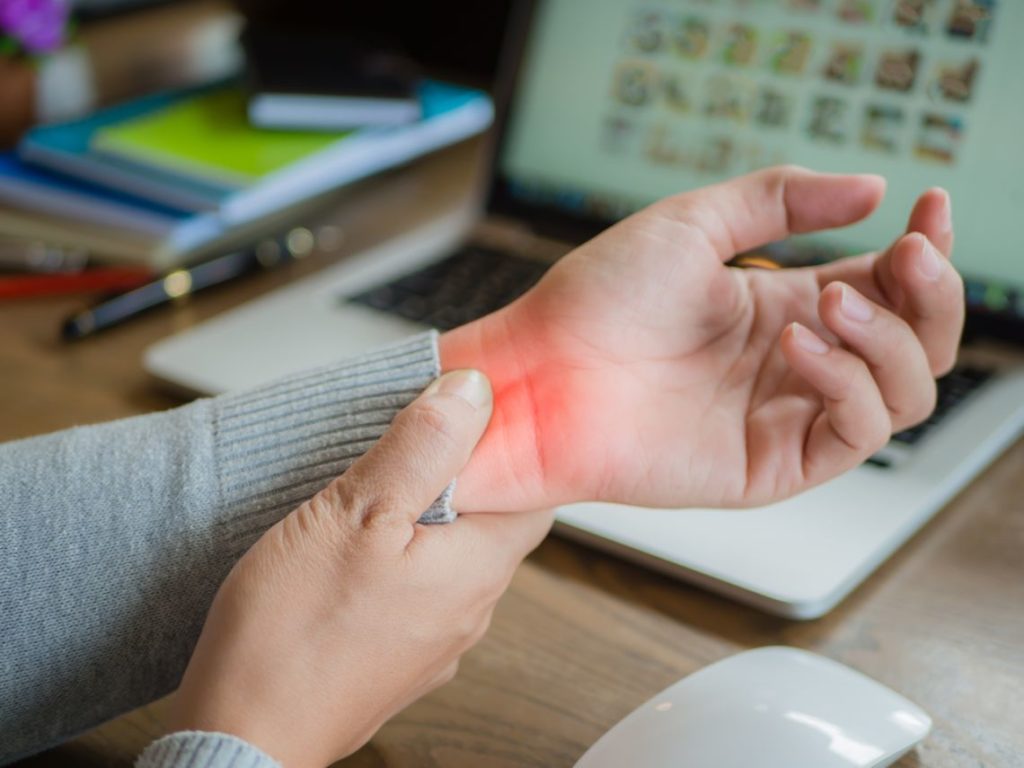
A study by University of Oxford researchers has found a genetic variant that increases the risk of both carpal tunnel syndrome and trigger finger, and opens the door for potential new therapies.
The study, which was supported by the NIHR Oxford Biomedical Research Centre (BRC), was published in The Lancet Rheumatology.
Carpal tunnel syndrome and trigger finger are the two most common diseases of the hand, accounting for over 60,000 operations per year in the UK alone, and large economic cost worldwide.
Dr Akira Wiberg, NIHR Clinical Lecturer in Plastic Surgery and co-senior author of a new study, said: “We’ve known for a long time that trigger finger and carpal tunnel syndrome – two of the commonest hand diseases worldwide – frequently co-exist in patients, but the reason for this has remained unclear. We’ve shown for the first time that this co-occurrence can partly be explained by genetics.”
The researchers from the University’s Nuffield Department of Orthopaedics, Rheumatology and Musculoskeletal Sciences (NDORMS) hypothesised that the co-occurrence of carpal tunnel syndrome and trigger finger may in part be explained by a shared genetic predisposition.
To test the theory, they performed a genome-wide association study (GWAS) of trigger finger in the UK Biobank, a population-based cohort of approximately half a million participants from the UK. They discovered five regions in the genome where sufferers of trigger finger carry, on average, different genetic variants from people who don’t have trigger finger.
One of those genetic variants is the same variant that increases the risk of carpal tunnel syndrome, which the team previously discovered in their 2019 GWAS of carpal tunnel syndrome. The genetic variant allows for increased signalling through a growth hormone known as “Insulin-like Growth Factor 1”, or IGF-1 pathway.
A Finnish population-based cohort called FinnGen was used to validate this finding.
Dr Wiberg continued: “We found a region in the DNA where sufferers of both diseases are more likely to carry the same genetic variant that ultimately results in increased signalling via the insulin-like growth factor 1 (IGF-1) pathway, providing new evidence that the growth hormone IGF-1 is likely to be a driver of both carpal tunnel syndrome and trigger finger. There are several potential ways of targeting the IGF-1 pathway with drugs or antibodies, which makes our finding particularly exciting.”
Dominic Furniss, Professor of Plastic and Reconstructive Surgery and co-senior author, commented: “This has been a fantastic collaborative effort by our team in Oxford, both at NDORMS and the Nuffield Department of Clinical Neurosciences (NDCN), our international colleagues at Cold Spring Harbor Laboratory in New York, and The University of New South Wales in Australia.
“This research really illustrates the importance of understanding the biology that underlies common surgical diseases, which in turn paves the way towards developing new treatments that will hopefully avoid patients needing to undergo surgery in the future.”
As well s the Oxford BRC, the study was funded by the Wellcome Trust and the Medical Research Council.
You can watch a short video here.